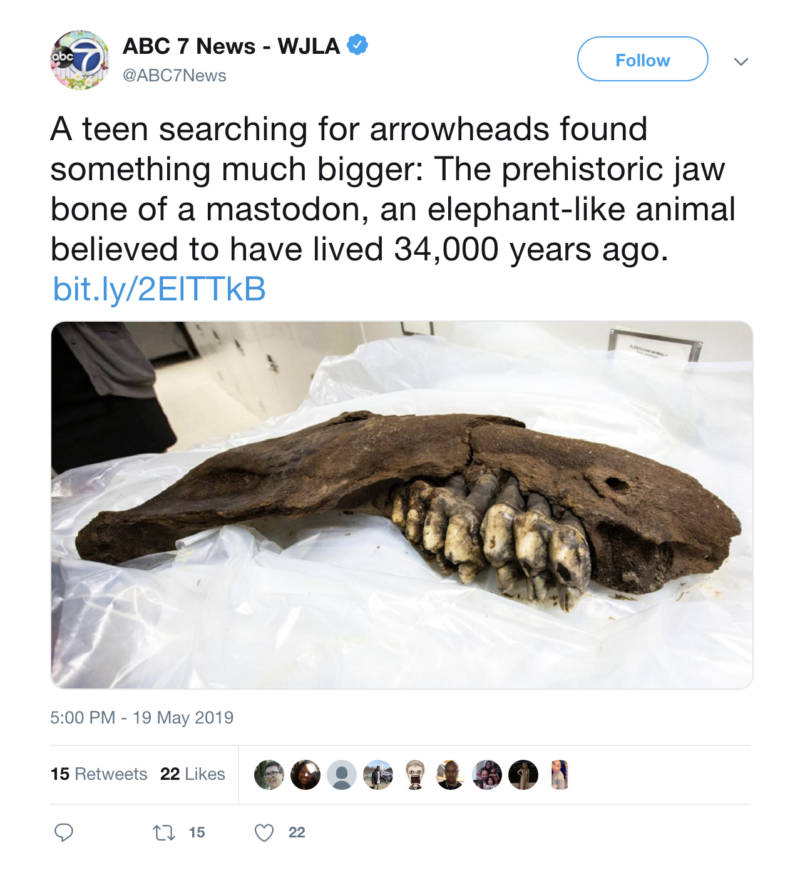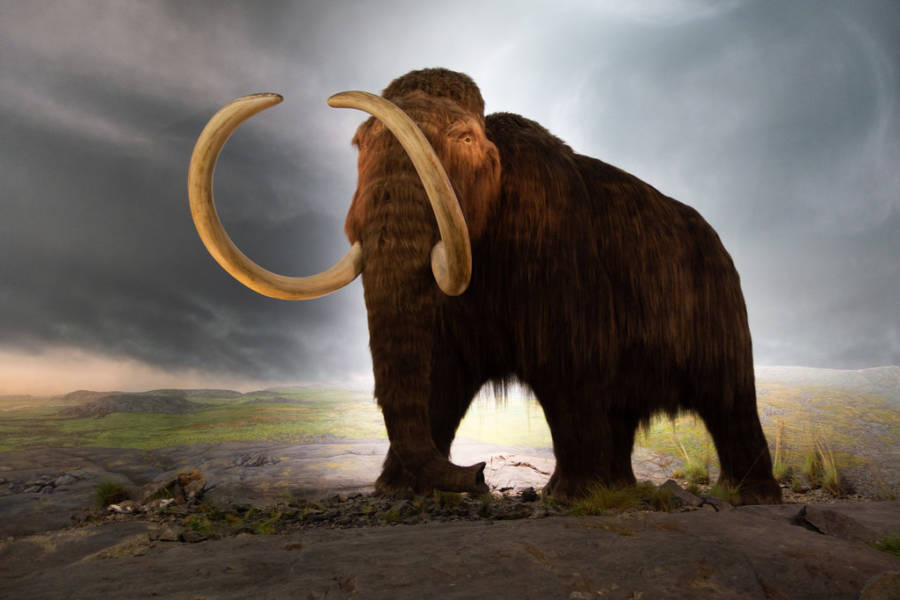A teenager
went looking for arrowheads on a friend’s farm in Iowa. Instead, he found the
bones of a 34,000-year-old mastodon — an elephant cousin that went extinct
10,000 years ago.
According to
the Iowa City Press-Citizen, the jaw bone, which measures 30 inches long,
belonged to a juvenile mastodon — an elephant-like animal believed to have
roamed Iowa tens of thousands of years ago.
Researchers
at the University of Iowa’s Paleontology Repository, where the bones are now
being stored, believe that the bone belonged to a young mastodon that likely
stood around 7 feet tall. The prehistoric remains have been tucked away in the
cabinets of the university’s Trowbridge Hall.
The curious
teen discovered the bone near a creek.
“He cradled
the fossil in his arms, which is very heavy, and carried it up to the
farmhouse,” Tiffany Adrain, the special collections manager and sole full-time
employee at the UI’s Paleontology Repository, told VICE. “The landowners
already knew what to do. They wrapped it up in plastic to keep it wet and they
sent us an email.”
“We were
incredibly lucky that the student had been walking up and down the creek
because the jaw bone can’t have been there for very long,” said Adrain.
Amazingly,
the specimen is in such great condition that when it was found it still
retained the qualities of regular bones and was mostly intact. If the fossil
had been exposed in the sun for too long it would have dried out and crumbled.
Mastodons
are distant relatives of the modern elephant, and as such, share traits with
them and with woolly mammoths. Male mastodons were sometimes taller than 9 feet
with tusks exceeding 16 feet in length. Like their elephant cousins, they had
floppy ears and long snouts.
Many often
confuse mastodons with woolly mammoths. While the first mammoths appeared about
5.1 million years ago in Africa — with woolly mammoths coming along much later,
about 600,000 years ago — mastodons first came about roughly 27 million to 30
million years ago, primarily in North and Central America. Mastodons are
slightly smaller than mammoths.
The farm
owners donated the remains to the repository anonymously, as they wanted to
avoid encouraging other people to go bone-hunting on their property. They came
across other mastodon remains on their property while they were fishing 30
years ago.



Amazing post. Thanks
ReplyDelete